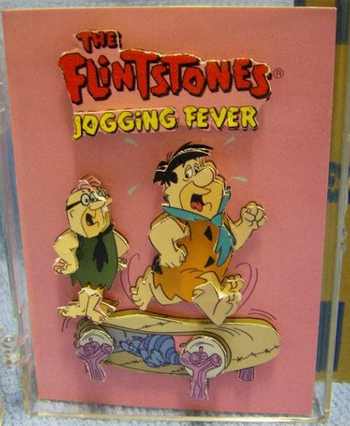
The Flintstones are 50 today. The media is celebrating the anniversary of this pioneer brand, the first animated programme to be shown in a prime-time evening slot on American television.
So why did audiences warm to the idea of a modern family living in the Stone Age? Was it perhaps because early-modern consumers were yearning for nature, sensing even then that somewhere along the way,America had taken the wrong turn?
The program’s makers, and advertisers, built on the contradictons inherent in modern life, and ensured the pre-historic setting didn’t keep The Flintstones from enjoying modern conveniences. From a ram’s horn telephone (a must for Wilma’s gossip sessions) to a skin-topped convertible with stone wheels, the series was a showcase for today’s nifty gadgets.
The enduring truth tapped by The Flintstones is that ordinary people want both a connection with the most ancient memories of the human race and at the same time the best that modern technology has to offer.
The Flintstones’ lives revolve around their home, friends, and leisure activities: a world of drive-ins, bowling, and their “Water Buffalo” lodge. They have a baby dinosaur and a saber tooth tiger as the family dog and cat. In 1962 and 1963, Pebbles and Bamm Bamm appears as the daughter and adopted son of the Flintstones and Rubbles respectively.
At first audiences did not warm to the Flintstones’ Neolithic suburbia – the series was greeted by the New Yorker as “an inked disaster” – but the comical premise of a “typical” American family living in a cartoon “Stone Age,” with home appliances represented as talking animals (a gramophone record spins beneath a bird’s-beak needle; a stegosaurus becomes a golf buggy; a mammoth’s trunk makes the perfect lawn sprinkler) and celebrity guest stars (authentic voices with caricatured bodies) enabled The Flintstones to attract a growing audience.
The realness of the relationships and relatability of the characters was designed to appeal to a mature (or semi-mature) sensibility – an influence that can be seen in generations of cartoon families to follow: as well as in the pop-culture allusion still made today by asking: Wilma? Or Betty?
Within a couple of years of launch, Fred Flintstone’s “yabba-dabba-doo” had passed into the language. By the mid-Sixties Hanna-Barbera cartoons were playing to a global audience of more than 300 million.
Its success shows we all secretly yearn for the simple life – as long as we can have all our comforts as well.
3 Responses
I grew up watching the Flintstones, it was what we watched on Saturday mornings. Now I see similarities to All In The Family, The Honeymooners and such. I liked the original show, I didn’t like it later on when they tried to remake it, like many things, the remake is a hollow shell of the original.
Thanks for the memories. :)
Wretha
great analysis
PS: I should add, I never had much affection for the FLintstones myself